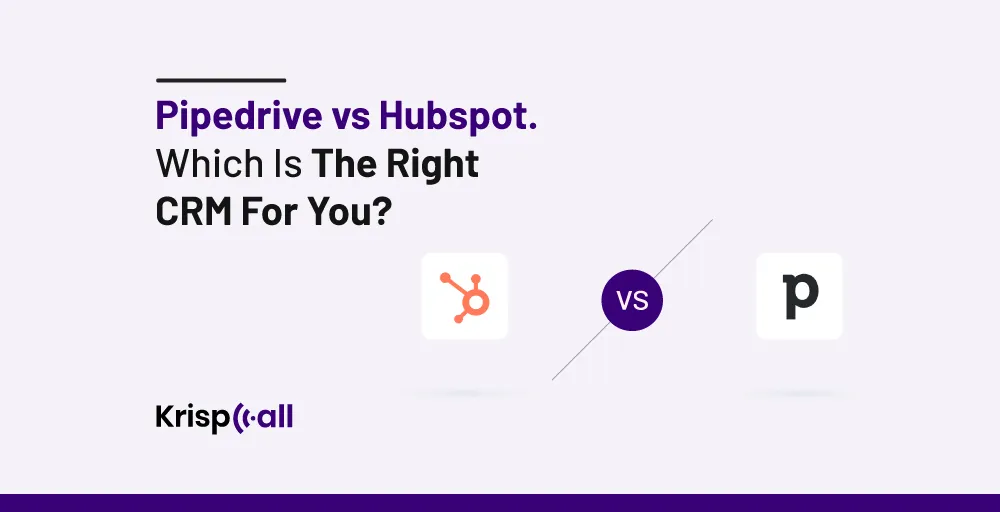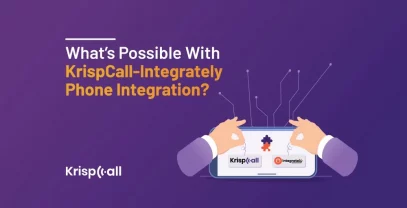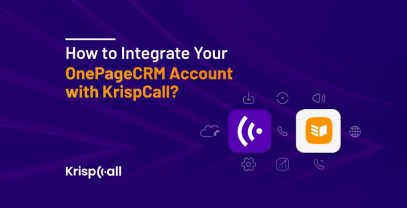Are you looking 👀 for the right CRM solution for your business that helps you streamline sales and manage customer relationships effectively? Then you are in the right place.
In today’s business world, choosing the right Customer Relationship Management (CRM) software is important for businesses of all sizes. A good CRM will help you streamline sales, marketing, and customer service processes, ultimately improving efficiency and driving growth. 💫
HubSpot and Pipedrive are two of the most popular CRM platforms. Both platforms help businesses by providing various features and meeting customers’ needs.
In this article, we’ll compare these platforms to help you determine which one is the best fit for your business.
🔑KEY HIGHLIGHTS
- Pipedrive is a Sales-focused CRM, whereas HubSpot is an all-in-one platform that aligns sales, marketing, and service strategies.
- Pipedrive integrates with 400+ applications, whereas HubSpot integrates with 1500+ applications.
- Choosing between Pipedrive and HubSpot depends on your business-specific requirements, budgets, and objectives.
- Both HubSpot and Pipedrive are known for being easy to set up and use.
Pipedrive Vs HubSpot At a Glance
Pipedrive is famous for focusing on pure customer relationship management. It provides users with an intuitive platform to effectively track and manage their interactions with prospects and customers.
On the other hand, HubSpot is a CRM platform for sales teams. It offers a comprehensive suite of sales and marketing tools to enhance lead generation, optimize sales processes, and drive revenue growth.
Let’s delve into the capabilities of two leading CRM platforms: HubSpot Sales Hub and Pipedrive.
| Factors | Pipedrive | HubSpot |
|---|---|---|
| Focus | Focuses on sales pipeline management, lead tracking, and deal management. | Offers a comprehensive CRM witd marketing automation, sales, and service hub. |
| Affordability | tdere is no free trial. Pricing starts from $14 per seat per montd. | It offers a free trial. Pricing starts from $15 per seat per montd. |
| Integration | Integrates witd 300+ applications. | Integrates witd 1000+ applications. |
| Security | You can limit what users can do, see, and access. Pipedrive also enhances your login security witd two-factor email verification. | HubSpot’s password-protected pages allow you to control who can see tde content on a specific page. |
| Support | Pipedrive provides a Pipedrive’s live chat, available 24/7, only for a Pipedrive plan user. | HubSpot offers 24/7 customer support for HubSpot plan users and for non-users as well. |
| Reporting Analytics | Provides basic reporting and analytics functionality | Offers robust reporting and analytics capabilities. |
| Supported language | Supports 22 languages | Support 12 languages |
Pipedrive Vs HubSpot: Plans and Pricing
Pipedrive and HubSpot offer various pricing plans that are suitable for varied business needs.
Let’s take a look at the pricing range of Pipedrive and HubSpot.
Pipedrive Plans and Pricing
Regarding pricing, Pipedrive offers five plans suitable for small to large-scale organizations with various features.
| Plans | Pricing |
| Essential Plan | US $14 /seat/month, billed monthly |
| Advanced Plans | US $29 /seat/month, billed monthly |
| Professional Plan | US $59 /seat/month, billed monthly |
| Power Plan | US $69 /seat/month, billed monthly |
| Enterprise | US $99 /seat/month, billed monthly |
HubSpot Plans and Pricing
HubSpot’s pricing is much more complicated than that of Pipedrive, as it offers various tools that are different from your choices. Its pricing plan is divided into two sections which are;
- For businesses & enterprises
| Plans | Pricing |
| Marketing Hub Professional | $890/month. Includes 3 seats |
| Marketing Hub Enterprise | Starts at $3,600/month. Includes 5 seats |
- For individuals & small teams
| Plans | Pricing |
| Free Tools | 0 |
| Marketing Hub Starter | $20/mo/seat |
| Marketing Hub Professional | $890/month. Includes 3 seats |
Pipedrive vs HubSpot: Features and Functionality
Let’s compare Pipedrive and HubSpot in terms of features and functionality they provide:
Sales Automation
Winner: HubSpot
Pipedrive Sales Automation has a template setup feature that automates most repetitive tasks. Thus, It helps salespeople spend more hours on administrative tasks than manual, repetitive tasks. It also has AI-powered tools that automate your day-to-day sales activities and provide you with helpful automation ideas.
HubSpot’s CRM sales hub offers extensive automation tools, including email sequences, lead scoring, and workflows, that can seamlessly integrate with other HubSpot components like marketing and customer service. It can also perform end-to-end automation across customers’ entire journeys.
Integration With Other Applications
Winner: HubSpot
Both Pipedrive and HubSpot offer integration with other applications. HubSpot stands out with its capacity to integrate with over 1,000+ applications, including messaging platforms, cloud phone systems, project management tools, time tracking tools, etc.
On the other hand, Pipedrive provides over 300 integrations with third-party apps, such as cloud telephony business phone systems and project management tools. However, it’s important to note that some Pipedrive integrations may require a connector app like Zapier, which could add additional costs and offer limited configuration options.
Email Marketing
Winner: Both
HubSpot provides a Robust Suite tool that offers email marketing tools, including team email collaboration, email scheduling, email tracking and notification, and email reply tracking. These features enable the team to work efficiently on email campaigns, send messages at optimal times, and gain insights into email performance and recipient interactions.
Pipedrive integrates with popular email applications such as Gmail and Outlook across all its plans. With all plans except Essentials, you’ll get customizable email templates, merge fields, email scheduling, email tracking, and group emailing in Pipedrive.
Customization
Winner: HubSpot
Pipedrive offers customization options that enable users to customize and design their sales stages, aligning the CRM with their specific sales workflow. This flexibility allows user to adapt the system to their unique business processes, enhancing its effectiveness.
On the other hand, HubSpot empowers its users with extensive customization options. Users can adapt sales process fields and reports to their requirements, giving them a sense of control and empowerment. It also empowers users to personalize interactions with leads and customers by creating tailored content and communications, thus enhancing the overall customer experience.
Lead and Deal Management
Winner: Pipedrive
HubSpot CRM is suitable for tracking and nurturing potential customers, but it’s not great at creating proposals compared to Pipedrive. Also, it doesn’t clearly distinguish between different types of contacts, whether they are new customers or old customers.
Pipedrive is great for managing leads and deals from start to finish. Its visual pipeline lets you see what sales tasks are most important and keeps a record of your customer conversations. Pipedrive also has a Smart Docs feature that automatically creates and sends documents like proposals, which HubSpot doesn’t have. That’s why Pipedrive wins when it comes to managing leads and deals against HubSpot.
Pipedrive vs HubSpot: Ease of Use
Winner: Pipedrive
Pipedrive and HubSpot differ slightly in ease of use according to user preferences.
Pipedrive is widely recognized for its easy design, making it exceptionally user-friendly. The interface is clean and organized, allowing users to easily navigate their sales pipeline and access important information without a steep learning curve.
On the other hand, HubSpot offers a more multifaceted system that includes marketing, sales, content management, and customer service tools. While the HubSpot interface is generally user-friendly, the broader scope of functionality might require a bit more time for a user to grasp fully.
Pipedrive vs HubSpot: User Feedback
While collecting user feedback from popular review platforms like g2.com, we found that many users found Pipedrive user-friendly, affordable, simple, and easy to use. They liked the visual aspect of the deal progressing and how it pulled information from a laptop or phone app.
Moreover, they love Pipedrive’s multiple functionalities, such as integrated email, integrated calendars, flexible tasks, etc. It helps them manage their contacts and sales funnels and allows them to monitor customers’ activities.
Users who reviewed HubSpot Sales Hub on g2.com highlighted it as a CRM platform with strong marketing features. However, some users pointed out limitations, such as the lack of A/B testing within the platform and difficulties accessing specific sales reports, such as close rates.
Despite these issues, HubSpot Sales Hub is praised for its marketing capabilities and usefulness as a CRM for growing companies. It offers easy-to-use sales CRM tools and features for sales engagement and configuring quotes. Users appreciate its ability to centralize customer relationships, align teams, and quickly adapt to business changes, making it valuable for companies looking to enhance customer relationships and grow effectively.
What are Pipedrive and HubSpot Best For?
Pipedrive is best for its sales-focused CRM, which manages all business workflows through a visual pipeline. At the same time, HubSpot is best for sales teams as it offers sales, marketing, and service strategies.
Pipedrive is Best For:
- Sales-focus: Pipedrive is well known for managing and optimizing the sales pipeline. These features make it ideal for companies prioritizing sales processes and lead management.
- Fit for Small to medium-sized businesses: Pipedrive’s affordable pricing starts at just US $12 per month, making it a popular choice for these companies.
- Customizable: Pipedrive offers customizable dashboards and various reporting features, allowing businesses to tailor their CRM according to their choices.
HubSpot is Best For:
- Businesses seeking broader integration: HubSpot integrates with 1000+ applications. This feature enables users to grow their business faster by focusing on what matters most.
- Fit for all business sizes: HubSpot offers various pricing plans that suit small businesses and enterprise-level organizations.
- Automation and analytics: HubSpot’s advanced automation features and AI-powered analytics tools make it a top choice for businesses looking to streamline processes, improve efficiency, and gain deeper insights into customer behavior.
Pipedrive vs HubSpot: Pros and Cons
Though Pipedrive and HubSpot are two leading CRM software, it’s essential to know that they have their own pros and cons. Here’s a breakdown to help you decide which might be a better fit:
Pipedrive Pros and Cons
Pros:
- User-friendly dashboard
- Affordable pricing
- 24/7 customer support
- 14-day free trial
Cons:
- Limited customization option
- No phone support is available
- No free version
- Compared to HubSpot, Pipedrive has limited features
HubSpot Pros and Cons
Pros:
- All in one platform
- Offers some free version of CRM
- Advanced automation capabilities
- Highly Customizable
Cons
- Expensive
- Contracts aren’t flexible.
- Templates customizable are hard.
- Lack of a/b testing.
Pipedrive Vs HubSpot. How To Choose The Better One?
Pipedrive and HubSpot are both top CRM solutions with various features that manage leads, streamline processes, track your sales, and improve sales processes.
However, now that we have compared both CRM solutions, it is time to decide which one is better for your business.
If you have a small to medium-sized business looking for affordable and user-friendly interfaces, Pipedrive is the best choice. Its monthly plan costs range from $14 to $79, perfect for startups. Similarly, Pipedrive sales-focused tools provide comprehensive insight, deal reports, and sales forecasting, which help you streamline the sales process and close deals.
On the other hand, if your business is looking for a single platform with all the software, integrations, and resources to connect marketing, sales, content management, and customer service, HubSpot CRM is the right choice. HubSpot offers intuitive and time-saving sales automation software that simplifies complex tasks and boosts productivity with user-friendly tools.
Final Thoughts
Both Pipedrive and HubSpot are well-known CRM solutions that have their own strengths and weaknesses. 🌟
However, choosing between the two completely depends on your business-specific requirements, budgets, and objectives.
If you are focused on improving your sales process within an affordable price range, then Pipedrive can be your best choice. On the other hand, if you are searching for an all-in-one platform that integrates applications and offers marketing, customer service, sales, operations, and content management features, then HubSpot will be perfect for you.
Evaluate your needs carefully and determine which CRM solution best suits your goals and resources.💫
FAQs
What is the difference between HubSpot and Pipedrive?
The main difference between HubSpot and Pipedrive is that HubSpot offers a broader range of features for managing all aspects of customer relationships, while Pipedrive is more specialized for sales teams focused on pipeline management and deal tracking.
Which is better HubSpot or Pipedrive?
HubSpot has more features and functionality, and it is best to afford it. Pipedrive is a more straightforward tool and sprints without training or a time-consuming learning curve.
Why is HubSpot so popular?
HubSpot is popular because it is highly customizable and offers advanced CRM features to manage sales and leads effectively.
Is Pipedrive a good CRM?
Yes, Pipedrive is a good CRM, as many small- and medium-sized businesses favor it for its simplicity and effective sales management process.
Is it worth paying for HubSpot?
Yes, it is worth paying for HubSpot because it is highly customizable and offers advanced CRM to manage sales effectively.
Is Pipedrive expensive?
No, Pipedrive isn’t expensive compared to HubSpot.





